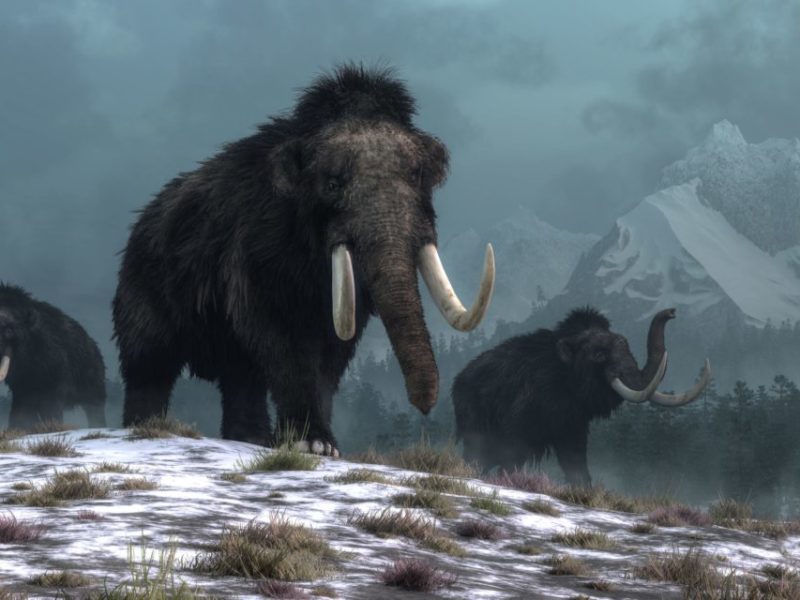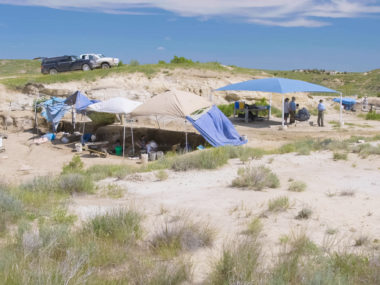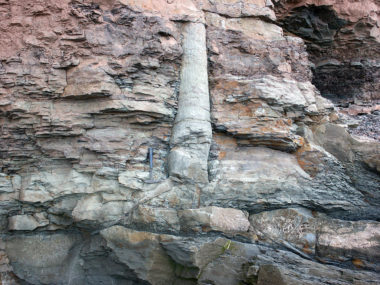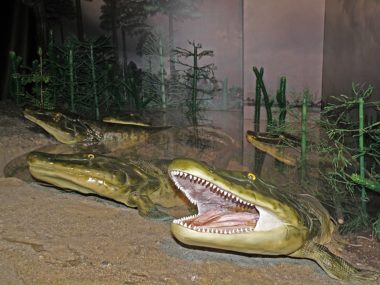For at least the past three decades, creation geologists and paleontologists have analyzed the geologic record in search of the Flood/post-Flood boundary. This boundary is the separation between which layer (or layers) represent the last laid down by the global Flood, and the first layers of the post-Flood period. There are currently two leading positions. One is that the boundary lies at or around the Cretaceous/Paleogene (K-Pg) boundary 1, roughly coinciding with the impact of a massive asteroid that hit the earth in the Gulf of Mexico. The second suggested boundary roughly coincides with the beginning of the Ice Age2. Supporters of both sides have proposed various criteria they feel best advocates their boundary’s location.
The following is a summary of “Evaluating potential post-Flood boundaries with biostratigraphy—the Pliocene/Pleistocene boundary” by Marcus Ross, and of the surrounding discussion and research pertaining to it. The views expressed are not necessarily those of New Creation.
Are Mammal Fossils a Clue?
Paleontologist Marcus Ross published a rather unique study in 2013. In it, he tried to establish the Flood/post-Flood boundary using mammal fossils in North America3. Our post-Flood diversity of animal life would have diversified from the representatives of each created kind of air-breathing land animal that walked off Noah’s Ark. We don’t know the pre-Flood world’s biodiversity levels upon its creation. However, it is likely that the time between Creation and the Flood experienced diversification much like what occurred afterward.
Only two (14 for some) of each air-breathing land animal kind survived the Flood, creating a bottleneck. The post-Flood climates, environments, continental arrangements, and topography were quite different after the Flood. Chances are small, then, that any post-Flood variety would be a carbon copy of pre-Flood lineages that didn’t survive. Therefore, when we look at the Flood/post-Flood boundary, Dr. Ross argues that we should see a clear break between life forms that died in the Flood and those that lived afterward.
Tracking the Mammals
But how to determine where and if such a break existed in the fossil record? Dr. Ross analyzed 303 genera (that’s the plural form of genus) from 28 families of North American. Researchers have found these in rock layers dating to the beginning of and just before the Ice Age. The rhinoceros family was the only mammal family that did not cross the pre-Ice Age/Ice Age boundary. Dr. Ross found that 23% of mammal genera and over 96% of mammal families did cross this boundary.
Three of these genera, the pronghorn antelope, Megalonyx (a ground sloth), and cotton-tail rabbits are significant. They not only appear on both sides of the boundary, but they are only found in North America. If the Flood/post-Flood boundary occurred near the beginning of the Ice Age, this makes little sense. These genera would have left their habitat to board the Ark, exit in the Middle East, and somehow wind up back where their pre-Flood predecessors were buried. All this despite the fact that the current continental configurations, climate, and topography did not even exist before the Flood!
Even more peculiar is the fact that no non-North American mammals are found in North America, when in other places they are only found in Flood rocks. Why did no koalas, penguins, or kangaroos end up migrating to North America?
Conclusion
Dr. Ross argues that the absence of a break between pre-Ice Age and Ice Age North American mammals makes this section of the geologic record an untenable Flood boundary. Instead, he posits that the Flood/post-Flood boundary lies at the K-Pg boundary, and suggests that other researchers contribute by finding similar patterns in mammal biodiversity on other continents, like Australia4 .
Footnotes
- Whitmore, John H. and Garner, Paul (2008) “Using Suites of Criteria to Recognize Pre-Flood, Flood, and Post-Flood Strata in the Rock Record with Application to Wyoming (USA),” The Proceedings of the International Conference on Creationism, 6, Article 35. ↩︎
- Clarey, T.L., and Werner, D.J. (2018). “Global stratigraphy and the fossil record validate a Flood origin for the geologic column,” Proceedings of the Eighth International Conference on Creationism, 327–350. ↩︎
- Ross, M.R. (2012) “Evaluating potential post-Flood boundaries with biostratigraphy—the Pliocene/Pleistocene boundary,” Journal of Creation, 26(2), 82–87. ↩︎
- Arment, C. (2020) “To the Ark, and Back Again? Using the Marsupial Fossil Record to Investigate the Post-Flood Boundary,” Answers Research Journal, 13, 1–22. ↩︎












Amen. the pronghorn is only a post flood creature. i see the ice age happening instantly from great volcanic interference from the continents moving up and down about 3-5 centuries after the flood. To fulfill the prophecy of Japhet spreading out and so stopping the others by a hostile environment. It lasted a century or two then melted in a sudden event. the fossilization of post flood tropical creatures in the americas is evidence.
Hey this is cool, I’d like to see more videos, though.
Thank you, Julio! And we do intend to produce video content in the future. So stay tuned!
cool, im in school doing a project this helps alot, hey is this a christian organization , cause i find my answers from the bible
Hello Braidyn,
I’m glad you found this article useful for your project! And yes, we are a Christian blog. You can find out more about our beliefs at our “What We Believe” page.